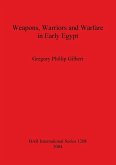What can rock art tell us about prehistoric warrior
identity and places of power? By using the shield
bearing warriors of Bear Gulch, Montana, I seek the
underlying relationships inherent in the elements
that make the warrior. The sheer number of shield
bearing warriors (759+) at Bear Gulch suggests it is
a place of power on the Northern Plains. Through
contextualizing the rock art with the ethnographic
record and utilizing statistical methods, these
warriors can hint at identity and what role
Bear Gulch played on the cultural landscape.
This book is about rock art, identity, and a mental
landscape. It contains the framework for the
Ceremonial Rock Art Tradition through dreams,
visions, religious structures, and cultural
worldviews in a pans-Plains Indian sense. This is
related to warrior and social identities and to the
concept of a prehistoric cultural landscape. This
book takes processual and post-processual steps for a
truly scientific, anthropological look at the shield
bearing warrior.
This book is ideal for the rock art lover,
archaeology and anthropology students, those curious
about prehistoric military identity, and those who
want to mingle statistics with rock art.
identity and places of power? By using the shield
bearing warriors of Bear Gulch, Montana, I seek the
underlying relationships inherent in the elements
that make the warrior. The sheer number of shield
bearing warriors (759+) at Bear Gulch suggests it is
a place of power on the Northern Plains. Through
contextualizing the rock art with the ethnographic
record and utilizing statistical methods, these
warriors can hint at identity and what role
Bear Gulch played on the cultural landscape.
This book is about rock art, identity, and a mental
landscape. It contains the framework for the
Ceremonial Rock Art Tradition through dreams,
visions, religious structures, and cultural
worldviews in a pans-Plains Indian sense. This is
related to warrior and social identities and to the
concept of a prehistoric cultural landscape. This
book takes processual and post-processual steps for a
truly scientific, anthropological look at the shield
bearing warrior.
This book is ideal for the rock art lover,
archaeology and anthropology students, those curious
about prehistoric military identity, and those who
want to mingle statistics with rock art.








